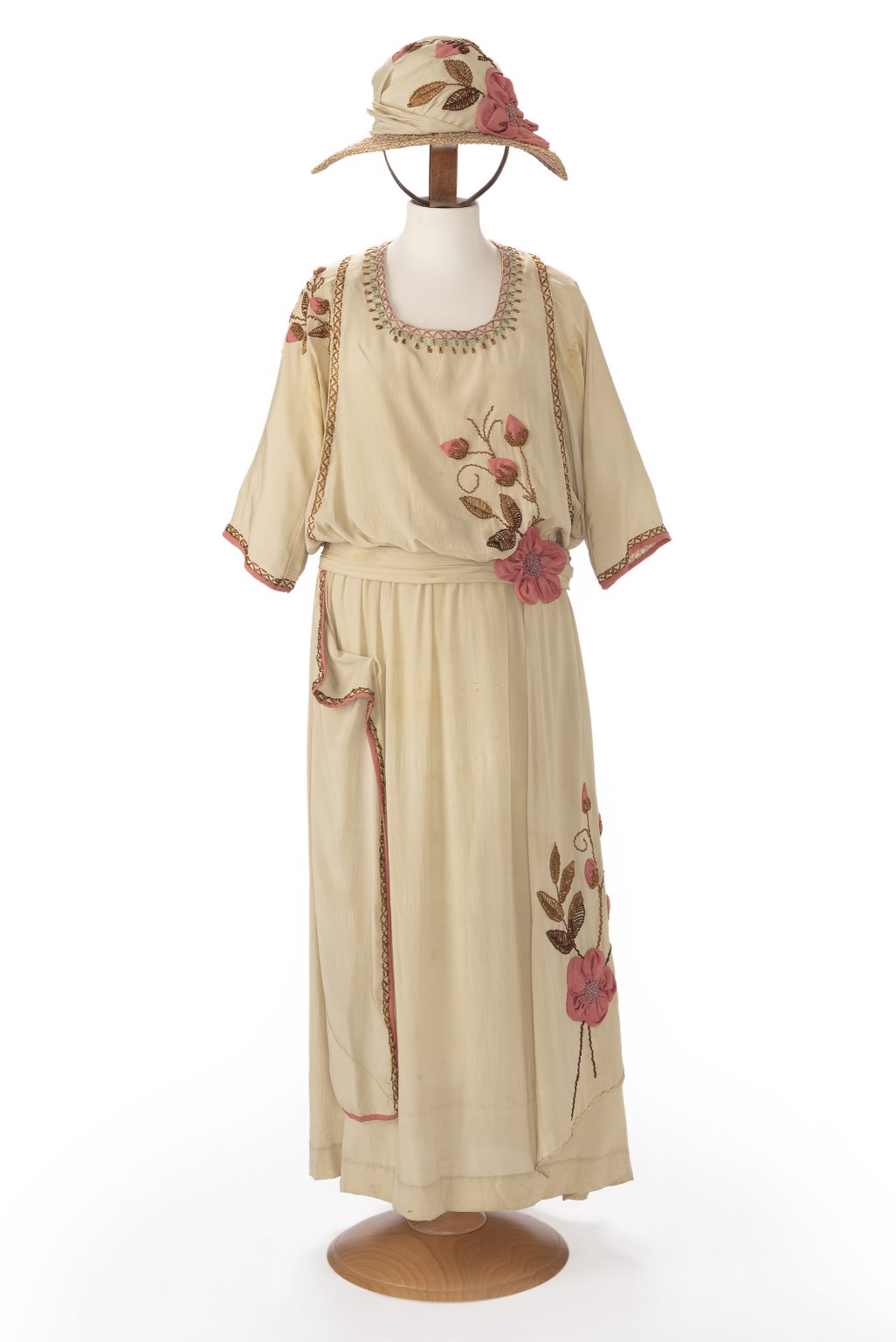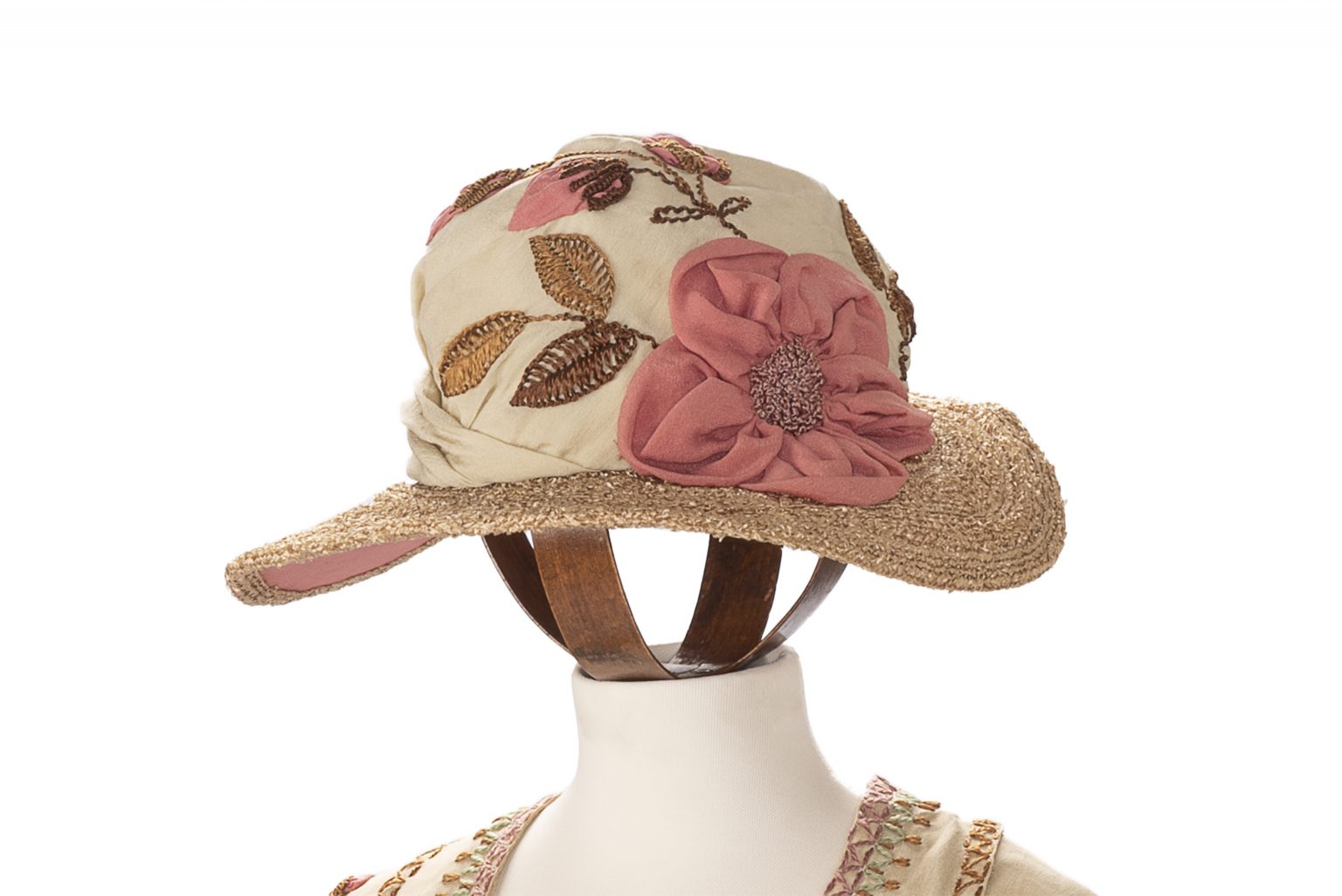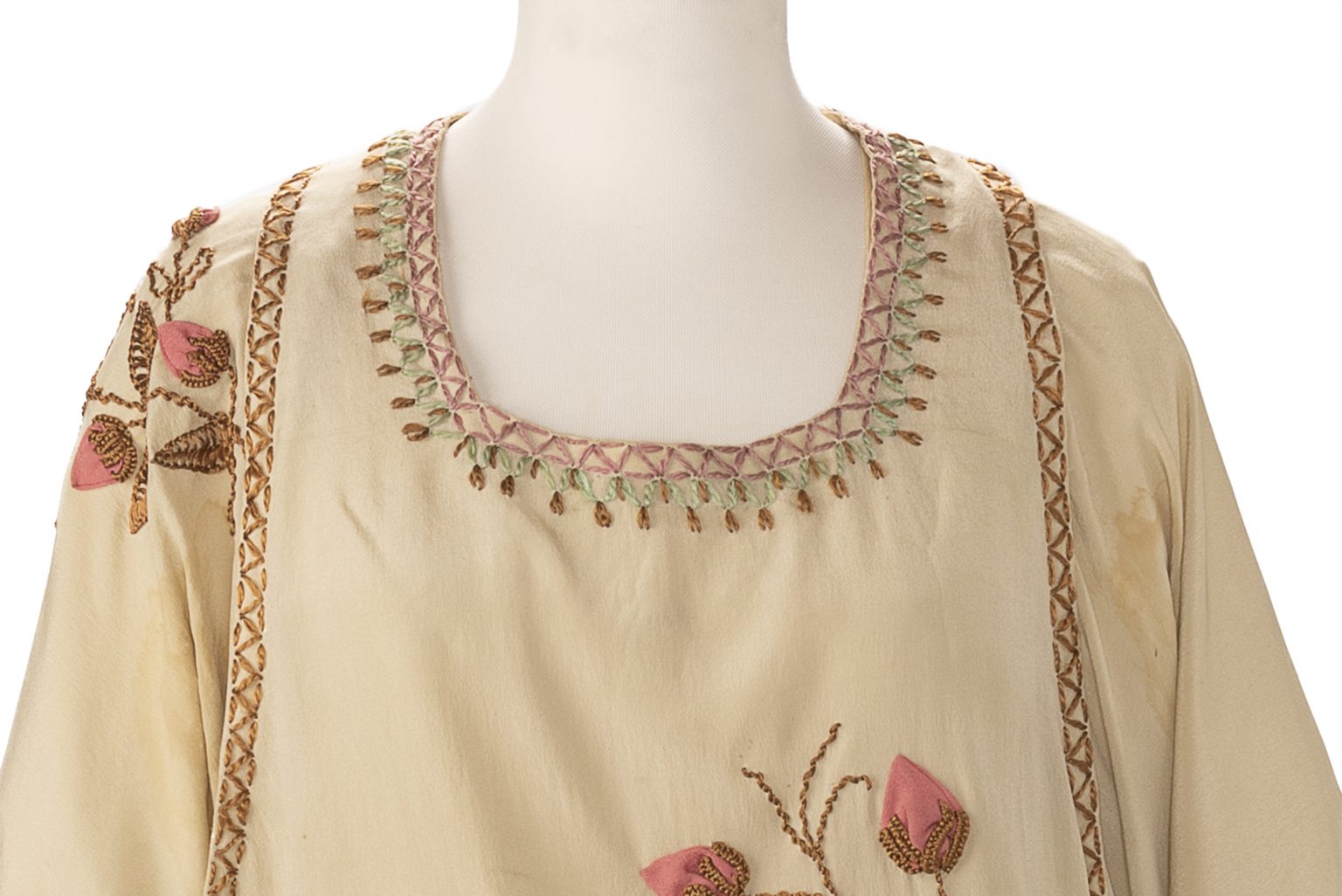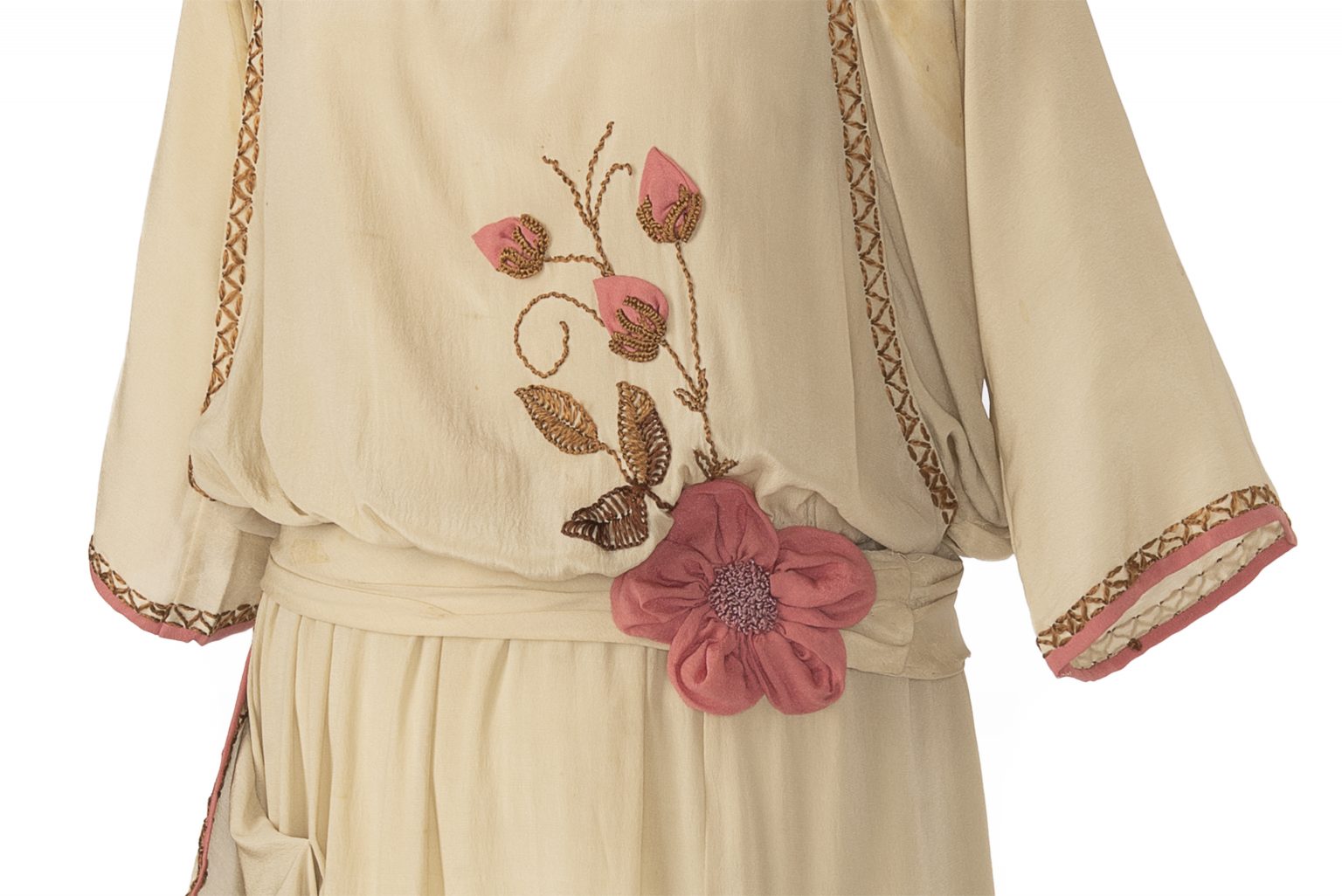
Suit, 1920-22 ca.
Silk crepe day dress with stylised floral applique embroidery and matching hat, c. 1919-22, Camilla Colombo Collection
Details



Historical context
The First World War ended with the signing of the Versailles Treaty of 1919. There were celebrations, but the toll was devastating: millions were dead, wounded or maimed. Cities were destroyed, industries needed to be reconverted and there were many soldiers to be reintegrated back into society.
Embodying the hopes for world peace after the Great War, the League of Nations was born. The desire for a return to normality was as strong as the aspiration for a better society. Women who had entered the world of work during the war to replace the men called to the front were for the most part excluded from it again, but the changes brought about by the war led to the recognition of their right to vote in several countries. The burgeoning United States, suffocated by prohibition, danced to jazz in speakeasies while in Europe the avant-garde artistic movements were in their prime. The cinema, which was still silent in this period, likened itself to a visual novel and produced masterpieces such as Das Cabinet des Dr. Caligari and Nosferatu.
This relative stability did not last long, soon totalitarian regimes appeared on the political scene to indelibly mark the history of the twentieth century with their destructive force.